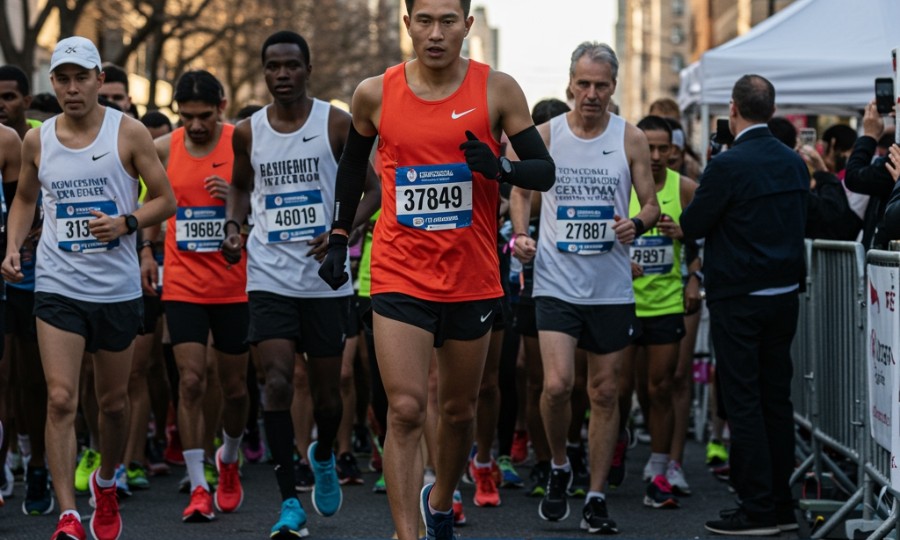
You’ve trained for months, pushed through early morning runs, and maybe even sacrificed a few social engagements for those long weekend miles. Running a marathon isn’t just about physical endurance; it’s a profound test of will and preparation. But here’s the thing: all that hard work can be undermined if you don’t prioritize safety. While the finish line is the goal, your well-being throughout the entire journey—from the first training run to the post-race recovery—is paramount. We’re not just talking about avoiding blisters; we’re talking about comprehensive strategies that ensure you cross that finish line healthy, happy, and ready to celebrate. After all, isn’t that what it’s all about?
The Foundation: Pre-Race Preparation You Can’t Skip
Before you even toe the start line, comprehensive pre-race preparation is your first and most critical safety net. You wouldn’t build a house without a strong foundation, right? The same goes for your marathon. This isn’t just about logging miles; it’s about smart, informed training and understanding your body’s limits. First, let’s talk about your medical check-up. The American Heart Association and similar bodies often recommend a thorough physical examination, especially if you’re new to long-distance running or have pre-existing conditions. Your doctor can help identify any potential risks, giving you personalized advice on how to train safely. It’s a simple step, but it’s incredibly important, and honestly, you owe it to yourself.
Then there’s your training plan. A good plan isn’t just about increasing mileage; it incorporates rest days, cross-training, and gradual progression, which significantly reduces the risk of overuse injuries. Organizations like USA Track & Field (USATF) provide excellent resources for safe training methodologies. You might be thinking, “I’m already following a plan,” but are you truly listening to your body? Pushing through sharp pain isn’t tough; it’s foolish. Similarly, nutrition and hydration leading up to the race are non-negotiable. Proper carb-loading isn’t just about energy; it helps maintain blood glucose levels, preventing ‘bonking.’ And hydration isn’t just about drinking water; it’s about maintaining electrolyte balance, especially in the days prior to the race. You’ll want to avoid anything new or unusual in your diet in the final week—your stomach will thank you.
On the Course: Staying Safe When Every Mile Counts
Race day is here! The energy is palpable, the crowd is cheering, and you’re off. But amidst the excitement, maintaining your safety focus is crucial. This is where your in-race strategies come into play. Hydration, again, takes center stage. You might feel like you’re doing great, but under-hydration (or even over-hydration, which can lead to hyponatremia) is a serious concern. Most major marathons, following guidelines from medical experts, strategically place water and electrolyte stations along the course. Utilize them! Don’t skip a station thinking you’ll make it to the next one—it’s just not worth the risk. Usually, it’s recommended to take small, frequent sips rather than guzzling large amounts at once.
Fueling is another key component. Energy gels, chews, or even small pieces of fruit provided at aid stations are there for a reason. Your body burns through glycogen stores quickly during a marathon, and replenishing these is vital for sustained performance and preventing fatigue-related errors. Pacing yourself is also incredibly important. It’s easy to get swept up in the adrenaline at the start, but sticking to your planned pace, especially in the early miles, conserves energy and reduces the likelihood of hitting a wall or, worse, experiencing heat exhaustion. What if you start feeling off? Dizziness, nausea, extreme fatigue—these aren’t just signs of discomfort; they’re signals your body is sending. Don’t ignore them. Seek help at the nearest medical tent or alert a race volunteer. They’re there to support you, and they’ve seen it all before. Remember, your health is more important than your time.
Emergency Response: When Every Second Matters
We know this can feel a bit scary to think about, but understanding emergency response plans is a vital part of comprehensive marathon safety. While race organizers do an incredible job of planning for every contingency, knowing what to do if you or a fellow runner needs immediate help can truly make a difference. Major marathons, like the Boston or New York City Marathons, develop extensive medical and emergency protocols in conjunction with local emergency services. They’ll have clearly marked medical tents, roving medical teams (including paramedics and doctors), and ambulances strategically placed along the course.
So, what’s your role? First, familiarize yourself with the race’s official emergency information, usually found in the participant guide. Know where the major medical stations are located. Second, if you see someone in distress—not just struggling, but showing signs like disorientation, collapse, or severe pain—don’t hesitate. Alert the nearest volunteer, course marshal, or medical personnel immediately. Generally speaking, they are trained to respond quickly. Many races also encourage participants to carry emergency contact information, often on a bib or wristband. Some even recommend writing it on your arm. This isn’t just for you; it’s a community effort. We’re all in this together, and looking out for one another is part of the spirit of the marathon.
Post-Race Recovery: The Marathon Isn’t Over Yet
You did it! You crossed the finish line. The euphoria is incredible, but the marathon’s safety considerations don’t end with that final step. In fact, immediate post-race care is crucial for preventing complications and ensuring a smooth recovery. Your body has just undergone immense stress, and it needs proper attention. First, keep moving gently for a bit—don’t just stop cold. A short walk helps your body gradually cool down and prevents blood pooling in your legs. Hydration and nutrition are still paramount. Drink plenty of water and electrolyte-rich fluids, and try to get some protein and carbohydrates within 30-60 minutes of finishing. Many races provide recovery snacks for this very reason.
You might be thinking, “I just want to sit down!” And while rest is important, a little movement and targeted nutrition can make a huge difference in how you feel in the coming days. Monitor your body for any unusual symptoms in the hours and days following the race. Persistent dizziness, extreme muscle tenderness (beyond typical soreness), swelling, or difficulty breathing warrant medical attention. Don’t brush off concerning symptoms; consult with a healthcare professional. Many major events even offer post-race medical areas where you can be checked out if you have concerns. Remember, a successful marathon experience isn’t just about finishing; it’s about recovering well and being ready for your next adventure. You’ve earned it!
Running a marathon is an extraordinary accomplishment, a testament to dedication and perseverance. By embracing comprehensive safety protocols—from meticulous pre-race preparation and smart on-course strategies to understanding emergency responses and prioritizing post-race recovery—you’re not just training your body; you’re empowering yourself with the knowledge to have a truly safe and rewarding experience. So, lace up those shoes, trust your training, and remember: safety always comes first. We’re excited for you!
Free Case Consultation
Injured in an accident? Contact Rosenberg, Minc, Falkoff & Wolff for a free and confidential case review with an experienced NYC personal injury attorney.


